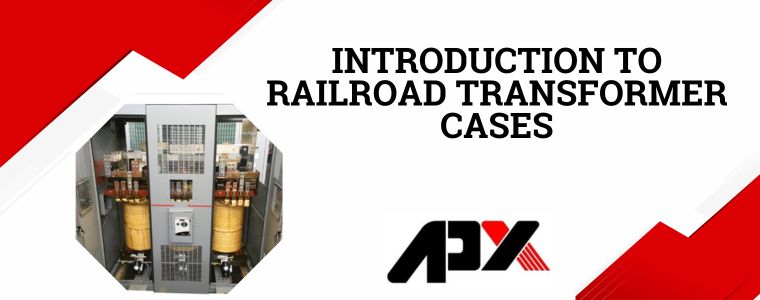Railroad transformer cases play a crucial role in ensuring the safe and efficient operation of power distribution systems within rail networks. These cases are specifically designed to protect and house the transformers that convert electrical power to the appropriate voltage levels required by various railway equipment. As the backbone of electrical infrastructure in the rail industry, it is essential to understand the importance of these transformer cases and the challenges associated with their design, maintenance, and safety. This article explores the key aspects of railroad transformer cases, ranging from their functionality and significance to common issues faced, design considerations, maintenance practices, safety measures, and future trends in this critical area.
1. Introduction to Railroad Transformer Cases
1.1 Understanding Railroad Transformers
Railroad transformers are essential components in the power distribution system of railroad systems. They play a crucial role in stepping up or stepping down voltage levels to ensure efficient power transmission and proper functioning of various electrical devices on trains.
1.2 Role of Transformer Cases in Railroad Systems
Transformer cases serve as protective enclosures for railroad transformers. They not only provide physical protection to the transformer but also ensure its proper insulation and prevent any external elements from causing damage. Transformer cases are designed to withstand the harsh operating conditions of railroad systems, including extreme weather, vibration, and mechanical stress.
2. Importance and Functionality of Railroad Transformers
2.1 Power Distribution in Railroad Systems
Railroad systems require a reliable and efficient power distribution network to supply electricity to various components such as traction motors, lighting systems, and onboard equipment. Transformers play a vital role in this distribution by stepping up the voltage from the power source for efficient transmission and then stepping it down to appropriate levels to power the different devices.
2.2 Role of Transformers in Power Conversion
Apart from power distribution, transformers also facilitate power conversion in railroad systems. They convert the high voltage AC power from the overhead catenary or third rail to the required voltage level for different applications. This enables the smooth operation of various electrical systems on trains while optimizing power consumption.
3. Common Issues and Challenges with Railroad Transformer Cases
3.1 Environmental Factors and Impact on Transformer Cases
Railroad transformers operate in diverse environments, ranging from scorching heat to freezing cold and everything in between. Such extreme conditions pose challenges to transformer cases, as they must maintain proper insulation, prevent moisture ingress, and resist the damaging effects of UV radiation and temperature fluctuations.
3.2 Mechanical Stress and Vibration
Trains experience continuous vibrations and mechanical stress during operation. Transformer cases need to be resilient enough to withstand these forces without compromising the integrity of the transformer inside. Proper design and construction of transformer cases play a crucial role in preventing damage due to mechanical stress.
3.3 Corrosion and Weathering
Railroad systems often traverse through varied terrains, exposing transformers and their cases to corrosive elements such as salt, dirt, and moisture. Transformer cases (enclosures) must be corrosion-resistant and weatherproof to ensure the longevity and reliability of the transformers, preventing premature failure or compromised performance.
4. Key Design Considerations for Railroad Transformer Cases
4.1 Material Selection for Transformer Case Construction
Choosing the right materials for transformer cases is vital to ensure their durability and protection. Corrosion-resistant metals like stainless steel and aluminum are commonly used due to their ability to withstand harsh environmental conditions. Additionally, non-conductive materials like fiberglass-reinforced polymers can provide excellent insulation properties.
4.2 Structural Design for Durability and Protection
Transformer cases must be designed with structural integrity to withstand mechanical stress and protect the sensitive electrical components inside. Reinforced frames, shock-absorbing features, and secure fastening mechanisms are crucial considerations to ensure that the transformer remains safe even during the rigors of train operations.
4.3 Ventilation and Cooling Systems
Efficient ventilation and cooling systems are essential to maintain optimal operating temperatures within the transformer cases. Proper airflow and cooling mechanisms help dissipate heat generated during operation, preventing overheating and potential damage. Adequate ventilation design should be incorporated into the transformer cases to ensure reliable and continuous performance.
With these design considerations, railroad transformer cases can effectively protect transformers and ensure their uninterrupted performance, contributing to the efficient and reliable operation of railroad systems.
5. Maintenance and Inspection Practices for Railroad Transformer Cases
Transformers are like the unsung heroes of the railroad industry, quietly working behind the scenes to ensure smooth operations. But even heroes need some TLC from time to time. In this section, we’ll discuss the essential maintenance and inspection practices for railroad transformer cases that will keep them in tip-top shape.
5.1 Cleaning and Debris Removal
Just like your car needs a regular wash to stay shiny and clean, transformer cases require cleaning too. Accumulated dirt and debris not only make them look unappealing but can also hinder their performance. Regularly removing dirt, leaves, and other gunk will prevent any potential issues and keep the transformers running smoothly.
5.2 Monitoring and Testing of Transformer Cases
Monitoring and testing are crucial to catch any problems before they escalate. Regular inspections should include checking for leaks, loose connections, and any signs of wear and tear. Additionally, performing routine tests to measure the transformer’s voltage, current, and insulation resistance will give you valuable insights into its performance.
5.3 Repair and Replacement Strategies
Even with the utmost care, transformers can sometimes suffer from damage or wear out over time. In such cases, it’s essential to have repair and replacement strategies in place. Promptly addressing any issues will minimize downtime and prevent any negative impact on operations.
6. Safety Measures and Regulations for Railroad Transformer Cases
When it comes to safety, railroad transformer cases are no joke. There are specific regulations and measures in place to ensure the well-being of both the equipment and the personnel working with them. Let’s take a look at some of these safety measures and regulations.
6.1 Compliance with Electrical Safety Standards
Electricity and safety go hand in hand. Transformer cases must comply with electrical safety standards to prevent accidents or electrical shocks. This includes proper grounding, insulation, and adherence to safety protocols during maintenance and operation.
6.2 Fire Prevention and Suppression
Fire is a major concern in any industry, and the railroad sector is no exception. Transformer cases should be equipped with fire prevention and suppression measures such as fire-resistant materials, heat detection systems, and fire extinguishing equipment to ensure the safety of both the transformers and the surrounding area.
6.3 Personnel Training and Safety Protocols
Proper training and safety protocols are the backbone of a safe working environment. Personnel involved in handling and maintaining transformer cases should receive comprehensive training to understand the potential risks and know how to mitigate them. Implementing safety protocols and procedures will help minimize accidents and ensure a secure working environment.
7. Future Trends and Innovations in Railroad Transformer Cases
As technology continues to advance, so do the possibilities for improving transformer cases in the railroad industry. Let’s take a sneak peek into the future and explore some potential trends and innovations.
7.1 Advanced Materials and Construction Techniques
New materials and construction techniques offer opportunities for stronger, lighter, and more durable transformer cases. Innovations like composite materials and advanced coatings can enhance the performance and lifespan of transformer cases.
7.2 Integration of Smart Technologies for Real-time Monitoring
The integration of smart technologies opens doors to real-time monitoring and predictive maintenance. By equipping transformer cases with sensors and data analysis capabilities, potential issues can be detected early, and maintenance can be scheduled proactively, minimizing downtime and optimizing performance.
7.3 Sustainability and Energy Efficiency Initiatives
In an era of growing environmental consciousness, sustainability and energy efficiency are paramount. Future transformer cases may incorporate energy-saving features, renewable energy integration, and sustainable construction materials to reduce their environmental impact and contribute to a greener railroad industry.
In conclusion, railroad transformer cases form an integral part of the electrical infrastructure in rail networks, ensuring the reliable and safe operation of power distribution systems. By addressing common issues, implementing effective design considerations, and following proper maintenance and safety practices, the longevity and performance of these transformer cases can be maximized. As advancements in materials, technology, and sustainability continue to shape the industry, it is crucial to stay informed about future trends and innovations in railroad transformer cases. By doing so, we can strive for more efficient, resilient, and environmentally-friendly solutions in the rail sector, ultimately contributing to the overall success and sustainability of railway systems worldwide.
Why Purchase Enclosures From APX?
APX provides customers across the world with high-quality aluminum, steel and stainless steel UL-listed and/or NEMA rated enclosures from our line of standard products or customized to individualized needs. When you come to APX, our experienced engineers will work with you to create an enclosure that adheres to your unique specifications.
Contact APX for Your Cabinet and Enclosure Needs
If you’re looking to purchase cabinets for your electrical components, APX is your solution. We are known for developing customizable enclosures that meet our customers’ individualized needs while adhering to NEMA and UL standards. When you work with us, you can expect tailored solutions at the most affordable rates.




